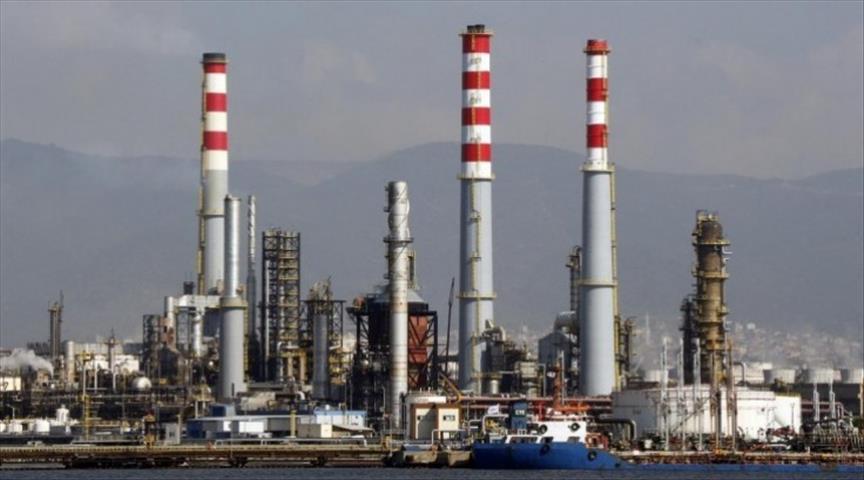Oil prices and overall demand are expected to fall in the second quarter of the year as some oil refineries in Europe and Asia will go into maintenance in March and the following two months, experts say.
"In both Europe and Asia, the number of refineries going into maintenance is at its highest in April and May," Richard Mallinson, a geopolitical analyst at London-based energy market consultancy Energy Aspects, told The Anadolu Agency.
Oil refineries are one of the important sources for crude oil demand. Their input levels do not only have an effect on stock builds and draws for crude oil, but also for refined petroleum products such as gasoline and diesel.
"Fundamentals would suggest we move lower with crude oil prices as refinery maintenance peaks at around 5 million barrels per day in March, and remains elevated across April and May, which will naturally reduce demand for crude," said Virendra Chauhan, an oil analyst for Energy Aspects.
Refinery maintenance, also known as a turnaround, is often scheduled during the second quarter of the year since it is right after the winter season. Turnarounds are planned one to two years in advance, and they last from one to four weeks, and sometimes even more.
"Because refineries go into maintenance, demand for crude will fall as a result and we are likely to see Brent price weaken again in the near future," Mallinson explained.
"I think we are going to see the Brent head back down to the $50s per barrel in the second quarter of 2015," he added.
Oil prices fell more than 60 percent between June 2014 and Jan. 2015 due to oversupply and low global oil demand, before they rebounded 35 percent since mid-January and stabilized around the $60 per barrel mark for the last few weeks.
"Oil prices are stabilized on a short-term support with some short-term supply issues," Mallison said.
One of the most recent short-term problems with supply is Libya declaring a force majeure on 11 of its oilfields due to internal strife and security concerns on Wednesday, which put a brief upward pressure on prices.
"It’s also about strong demand in Asia because of lower oil prices," Mallinson added, emphasizing that refiners buys more oil and demand picks up.
Chauhan agreed, saying "the recovery in crude prices has been demand-led."
In addition, Saudi Oil Minister Ali al-Naimi stated on Feb. 25 that the oil markets have settled down, saying "Markets are calm now, demand is growing. We don’t want anything that creates volatility in the market."
He reiterated Wednesday in Berlin by saying “demand is gradually rising and oil prices are stabilizing.”
- Second half of the year
Oil prices are expected to decrease after the mid-year as the falling number of oil drilling rigs at the beginning of the year will begin to have a negative effect on oil output volumes starting from the second half of the year.
The total number of oil rigs worldwide decreased to 3,309 on Jan. 2015, from 3,570 on Dec. 2014, recording a 7.31 percent decline worldwide, according to a Baker Hughes report published on Jan. 6.
The U.S.-based oilfield Services Company also said in a weekly report on Jan. 30 that the number of oil drilling rigs in the U.S. suffered the largest single-weekly drop since 1987 by falling 94 units week-on-week.
However, there is a significant lag between the number of oil rigs decreasing, production responding and inventories falling, experts say, while the impact of the decreasing number of oil rigs will not be seen on oil prices until the second half of 2015.
"In the second half of 2015, we expect prices to increase seasonally based on supplies, primarily from the U.S., coming off," Chauhan said.
"We particularly expect in the fourth quarter of 2015 that year-on-year growth from the U.S. will be lower, whilst demand will be seasonally higher, thus we see an inversion in the supply-demand curve," he concluded.
By Ovunc Kutlu
Anadolu Agency
ovunc.kutlu@aa.com.tr


